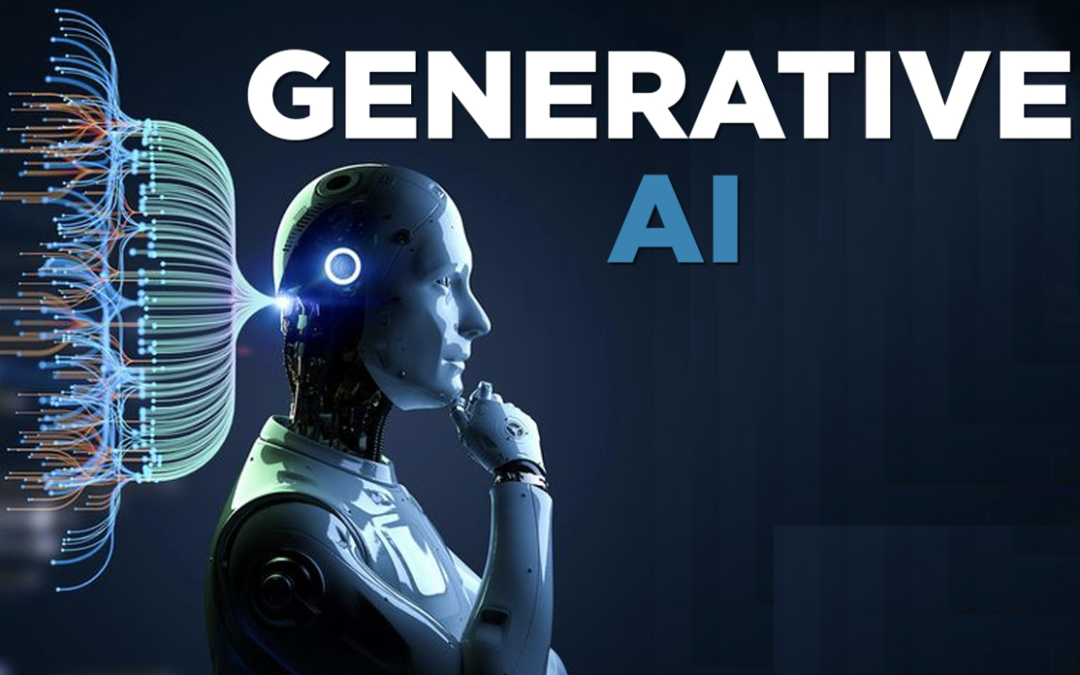Retail is an ever-evolving industry, and companies are always searching for new and creative ways to improve consumer experiences, optimize operations, and increase income. Generative AI is one such revolutionary technology that is causing waves of changing trends in business. This article delves into the emerging influence of generative AI in the retail industry, its uses, and its advantages.
Transforming retail with generative AI services:
Here’s a quick look at how generative AI services can help the retail and marketing sectors:
- Content creation: customized content increases marketing efficiency on investment while also increasing the likelihood of a sale. The consumer experience is enhanced by generative AI services, which accelerate the process of producing product descriptions and advertising materials. Content moderation is a related use of generative AI. It may automatically filter promotional materials to avoid any unintended harm to product promotions from unacceptable online information.
- Crowdsourcing of ideas: Today’s brands need to be socially aware and responsible. Positive and negative brand talk on social media may be a valuable source of information for consumer businesses. The output is now less expensive thanks to the development of generative AI. Concepts for the design and inspiration for the design of new concepts can be found in packaging colors, flavors, product presentation, advertising concepts, and environmental issues. This aids in the search for fresh approaches to connecting with particular customer groups.
- Improving the client experience: The quality of the final consumer experience is important to modern consumer sector businesses, both online and in physical retail. Retailers aim to increase customer loyalty and succeed at personalizing their product options. Although traditional AI has been incredibly beneficial, generative AI has further opened up new gates of possibility. An exact visual depiction of a customer’s desires can be created from a brief handwritten description via text-to-image or video conversion, and this can be compared with inventory that can be fulfilled to yield useful insights for the creation of new products.
- Reimagine Demand and Inventory Scheduling: Massive expenditures are caused by inventory difficulties. However, AI forecasting anticipates demand more effectively, avoiding shortages or overstocking. To predict future demands, it checks historical sales data, trends, seasonality, and other variables. Generative AI automatically raises reorder points during peak seasons to accommodate demand spikes. This optimization lowers costs and lost revenue.
- Product Development With the help of AI: Creative AI helps with product design and development by producing creative concepts based on consumer preferences, industry trends, and historical sales data.
The AI-created model can also produce whole new ideas that can be further developed by designers, all the while being true to your brand and reflecting the distinctive qualities of your company.
- Enhanced performance in call centers: For agents in call centers, it can be difficult to keep up with a large number of queries and offer the appropriate response. By taking knowledge from previous calls, generative AI can provide assistance by facilitating post-call follow-ups, transcript summarizing, and real-time sentiment analysis. As a result, there is a noticeable improvement in the time taken for grievance resolution.
- Launching a campaign: The group of equipment, personnel, performers, settings, and other requirements needed to create an advertisement campaign can be really expensive. Actors and props are not as frequently needed thanks to generative AI, which also simplifies the production of campaigns. Additionally, localized campaigns that are customized according to each location can be created by brands, adding to the campaign’s personalized element. Generative AI makes it possible to create visual effects (VFX) more quickly and easily with significantly low levels of cost.
- AI-driven insights: Big language models translate findings into understandable terms after analyzing various data sources. This optimizes supply chain problems, labor scheduling, inventory positioning, and other crucial company choices. Business executives can identify patterns and trends in consumer behavior, such as the best times of day to shop, the products they like to buy, or the time of year they do their holiday shopping, which can help them develop deals that are even more appealing to their clients. The capacity to interpret online trends and use social media data to inform designs or material that would appeal to a certain audience is one suitable example.
Read More: Generative AI in E-commerce: Enhancing Customer Experience and Personalization
Conclusion:
In conclusion, generative AI services are revolutionizing the retail sector by providing innovative solutions that improve every aspect of the industry. Be it AI-driven sales strategies, customer insights, or advanced supply chain management, generative AI is transforming how retailers interact and engage with customers. By utilizing AI in retail, businesses can gain deeper insights into consumer behavior, optimize inventory, and deliver personalized shopping experiences. As generative AI continues to evolve, its integration will be of utmost importance in setting new standards for retail excellence and customer satisfaction.

